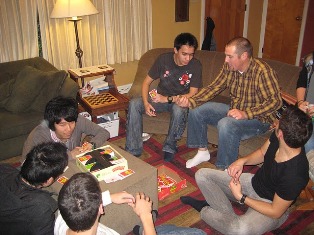 |
| Christmas in NYC, Rockefeller Center. |
In the US
In Argentina
 |
| Globos in Argentina. |
| Bondi Beach, Sydney. |
In
In England, Christmas preparations and traditions are similar to those of the US’s – people decorate their homes, hang stockings up, have Christmas dinner, and open presents on Christmas Day. One difference, though, is that most families would gather to watch the Queen’s speech to the Nation and Commonwealth at
In China
| A Chinese Christmas tree |
In Ghana Ghana
In India India
 |
| Banana tree with decorations. |
How does your family or culture celebrate Christmas? If you don't celebrate Christmas, what are some traditions that you have for your holiday?









